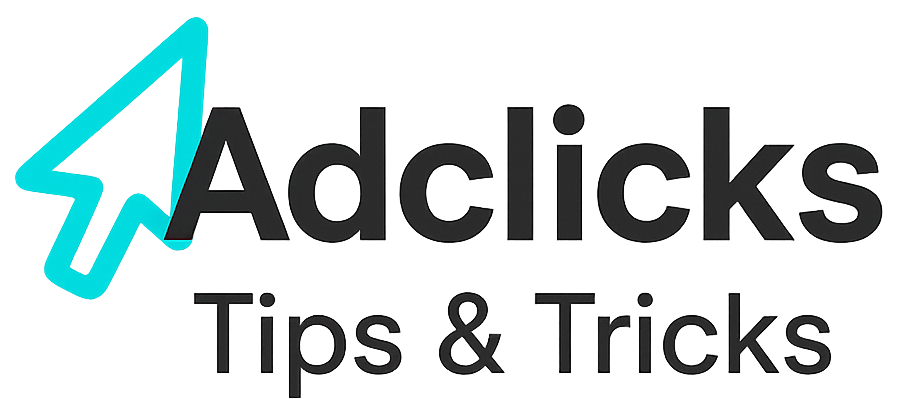Hi5, revisited: why this older network still matters
Hi5 has evolved from its 2000s heyday into a lighter, social-oriented space built around meeting new people, casual conversation, and community groups. It isn’t a buttoned-up professional forum, and that’s the point: users arrive in a talkative mood, open to personality and discovery.
For a publisher, that mood is useful. If you meet people where they relax, you can introduce ideas that travel. Do it with warmth, then guide them to a focused article, video, or tool on your site. When those visits land cleanly, Adclicks turns attention into measurable value without breaking the flow.
Who’s actually on Hi5—and what they want to see
Hi5’s audience skews toward social discovery: people curious about culture, entertainment, lifestyle, and light community topics. You’ll see music fans, local scenes, hobbyists, and nostalgia-driven users who remember social web 1.0—and still like its pace.
They’re not browsing for policy papers. They’re looking for something interesting to comment on or share. If you can turn a small, human story into a doorway to bigger ideas on your site, you fit the room. Once they click out, Adclicks can monetise that interest through placements that feel part of the reading experience, not an interruption.
Culture and tone: conversational by design
Hi5 rewards voice. Short anecdotes, playful hooks, and visuals do better than long, formal copy. Think: a punchy opener, one sharp takeaway, and an inviting link that promises more detail without sounding salesy.
Lean on community cues. Ask questions. A friendly “What would you change about this?” prompt can double your replies and prime people to follow your link. When those readers arrive on a calm, fast page, Adclicks earns quietly in the background—your content remains the star.
Traffic reality: quality beats volume here
Hi5 won’t send tidal waves. It sends pulses—bursts from active groups and conversations. That’s fine if you optimise for depth, not just clicks. Expect weekday evening bumps, weekend flurries, and spikes when a group organiser engages with your post.
Plan around that cadence. Publish when your target groups are lively, then be present to answer comments. That presence raises click-through, which improves on-site engagement. Because time-on-page tends to be higher with primed visitors, Adclicks placements often perform more steadily than the same pages hit by drive-by traffic.
What kinds of publishers actually fit
Sites with social gravity win. Entertainment, music, film, gaming, lifestyle, relationships, local culture, creative arts, and “how-to” micro-skills feel native. Tech and business can work, but only if you translate the pitch into people terms: stories first, jargon last.
If you run a magazine-style site, create short, personality-led teasers for Hi5 and save the full depth for your domain. For niche blogs, pick one irresistibly specific angle at a time. The goal is to earn curiosity honestly. When curiosity turns into a click, Adclicks helps you capture value without asking readers to tolerate clutter.
Outbound links and posting surfaces: what’s possible
Group posts on Hi5 commonly carry raw URLs, and conversation threads often invite members to “drop the link.” Treat the post as a trailer, not the movie. Lead with a crisp summary, then include a single, clear link to a page that delivers exactly what you teased.
Don’t bury the link. Place it where the eye expects it—near the punchline or the promise. And never split attention with multiple destinations. A single relevant link outperforms a handful of vague ones. Once they land, Adclicks can do its job on a tidy, content-first page.
Crafting posts that travel off-platform
Use a hook that speaks out loud: a short line that sounds like you’re telling a friend a story. Add a visual if it helps the point land. End with a “come see” invitation that feels like a natural next step rather than a sales pitch.
Tighten the post until the click is the only way to resolve the tension you build. If you leave nothing for the landing page to finish, you’ll starve your own CTR. On the destination, give readers a clear headline echoing the teaser, a fast first paragraph, and visible Adclicks placements that don’t shove the text aside.
Designing landing pages for Hi5 readers
These visitors react to pace and clarity. Keep the path simple: headline, core insight, optional media, and a soft next step. If they met you in a group about movies, put the promised film guide up top, not three screens down.
Audit above-the-fold space. If ads appear before meaning, you’ll lose them. Lead with value, then allow Adclicks units to appear in natural breaks—after the intro, mid-article modules, and a respectful footer. That rhythm improves viewability and keeps the reading experience pleasant.
Geographic and community pockets: how to find yours
Hi5 engagement pockets often form around language, local culture, or scene interests. Hunt for communities where your voice already belongs. A regional music blog has better odds in a local scene group than in a general feed.
Listen first. Track which posts spark long threads and which formats fall flat. Mirror the winning patterns with your own twist. As you map the communities that respond, direct traffic to matching sections on your site and let Adclicks monetise the attention at a pace that never overwhelms.
Comment etiquette and momentum
Think of comments as a second post. Add a bit more story, answer a question, or share a behind-the-scenes detail. Each reply refreshes the thread and nudges the algorithm. That renewal loop sends latecomers to your link long after the first wave.
Leave a tidy trail: if someone asks for specifics, update your landing page with a quick FAQ blurb and point them there. The tighter the loop between question and answer, the more natural the click-through feels—and the better your Adclicks revenue compounds over time.
Measuring what matters (without overcomplicating)
Tag every Hi5 link with UTMs so you can separate this traffic in analytics. Watch time-on-page, scroll depth, and return rate. A smaller audience with bigger sessions beats a larger audience that bounces in seconds.
Compare creative types against outcomes: which hooks win comments, which intros earn clicks, which pages keep readers. Move your Adclicks units based on that behaviour—ads perform best where readers pause, not where they fight to find the text.
Risks, rules, and practical notes
Hi5’s moderation can clamp down on obvious spam. Pace yourself, lead with value, and keep each post unique. If a group bans link drops, become a helpful regular first; hosts often relax rules for contributors who raise the conversation.
Keep account access tidy. If a user in your team needs a password reset, do it at https://app.tagged.com/pwreset/. Hi5 and Tagged operate independently day-to-day, but the reset path runs through Tagged’s endpoint. On the site side, protect goodwill: let Adclicks complement content rather than crowd it.
Building a content loop that compounds
Plan in arcs, not one-offs. A three-week theme (e.g., “micro-guides to local film history”) lets you learn what sparks dialogue and reuse winning angles. Each post hands off to the next, and each landing page links forward so readers wander your catalog.
That loop lifts everything: brand memory, click-through, session depth, and ad performance. Over a month, your publication starts to feel familiar in those groups. Familiarity reduces friction. Reduced friction means a healthier stream of visits that Adclicks can monetise gently, session after session.
Action plan (9 steps, simple and actionable)
- Identify 3–5 Hi5 groups where your voice fits; listen for a week.
- Draft 5 short “trailers” (hooks + one promise) that map to matching landing pages.
- Post one trailer when the group is most active; pin a single clean link.
- Be present for the first hour; answer every genuine comment.
- Tighten landing pages: fast load, echo the hook, readable on mobile, Adclicks in natural breaks.
- Tag links with UTMs; compare time-on-page and scroll depth to other sources.
- Iterate the hook and image; keep what works, drop what doesn’t.
- Build a three-week theme so posts interlock and readers explore more pages.
- Scale slowly: add two new groups or one new series once your first loop performs.
If you want this adapted into a shorter version for a public guide—or expanded with platform screenshots and example post-to-page flows—I can do that next while keeping to the “max two lists” rule.
Relevant Links
- Support: https://support.snipesearch.co.uk/
- FAQ: https://adclick.snipesearch.co.uk/index.php?page=index/faq
- Contact Form: https://adclick.snipesearch.co.uk/index.php?page=user/support
Stay Connected
- Snipesocial: https://www.snipesocial.co.uk/pages/snipesearch
- Twitter: https://twitter.com/snipesearch_uk
- Facebook: https://facebook.com/snipesearch
- LinkedIn: https://linkedin.com/company/snipesearch/
- VK: https://vk.com/snipesearch_uk
- Focus: https://focus.xyz/snipesearch
- YouTube: https://youtube.com/@snipesearch
- diaspora: https://diaspora.snipesearch.net/people/7431fcf0806c013e936e00163c6e7bdf
- Friendica: https://friendica.world/profile/snipesearch
- Hi5: https://www.hi5.com/snipe5
Analytic Tools
StatCounter: https://statcounter.com/
Rommie Visitor Analytics: https://rommie.net/




